Norway has selected BAE Systems’ Type 26 design as the basis for its future frigate programme, a decision that will shape the Royal Norwegian Navy for decades to come.
The choice reflects both Oslo’s urgent need to restore lost capability and its determination to secure a modern anti-submarine warfare platform that can operate seamlessly with NATO allies.
The programme aims to replace the Fridtjof Nansen-class frigates, a fleet that has been diminished since the loss of HNoMS Helge Ingstad in 2018. With only four ships left in service, Norway has faced challenges meeting its commitments in the High North and across the North Atlantic.
These waters remain strategically vital as Russian submarines operate out of the Kola Peninsula into the Norwegian and Barents Seas, creating persistent pressure on NATO’s northern flank. The new frigates are expected to become the backbone of Norway’s ability to monitor, deter and if necessary counter undersea activity in one of the most contested maritime regions in the world.
The Type 26 has been designed from the keel up as a world-class anti-submarine warfare vessel. Its acoustic quieting, advanced sensors, and mission flexibility make it particularly suited to the environment in which Norway operates. With a displacement of around 6000 tonnes, it offers a balance of endurance, stealth, and growth potential. The ship’s large mission bay and adaptable design also ensure that it can integrate emerging technologies such as uncrewed systems and directed energy weapons in future.
Norway’s decision adds to the growing international adoption of the Type 26. The Royal Navy is building eight ships on the Clyde, while the Royal Australian Navy has committed to nine under the Hunter-class programme. Canada is building fifteen under the Canadian Surface Combatant project. Norway’s participation now creates a transatlantic community of operators centred on the same platform, a level of commonality that is rare in modern naval procurement.
The benefits of this shared approach are clear. Common training, logistics, and sustainment systems can drive down costs across the user base. More importantly, the ships will be able to operate together in NATO task groups with an unprecedented degree of interoperability. In an alliance context where undersea threats remain a defining challenge, a multinational fleet of advanced frigates designed for anti-submarine warfare represents a significant enhancement to collective defence.
For Norway, the choice also carries industrial implications. BAE Systems has already established a complex supply chain across the UK, Australia, and Canada, but Oslo is expected to secure meaningful involvement for Norwegian industry in both the build process and long-term support.
Opportunities will likely emerge in areas such as combat systems, sensors, and electronic warfare equipment. Domestic participation has been a political priority for the Norwegian government, which views industrial access as central to national security




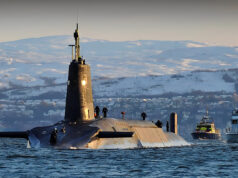
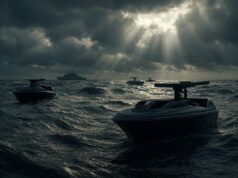


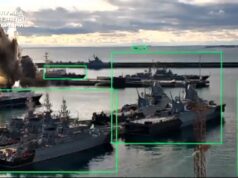
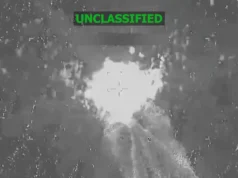
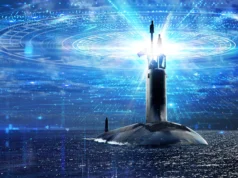
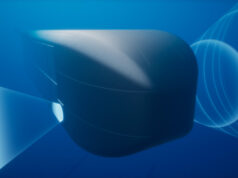
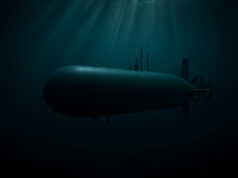

Will this impact the Royal Navy receiving their ordered ships ?
They’ll probably take one of the current ships in build and divert it. That said, there is some slack to speed up the build process as currently, the government is purposefully slowing down the build process to ensure continuous work into the 2030s. With new orders now confirmed for those Glasgow facilities, the UK government could opt to speed up the builds slightly.
Measures to speed up the Build times have already been implemented – the Janet Harvey Build Hall,the outsourcing of Hull Block Fabrication to other Yards to name two.As others have stated on here before the Bottleneck will be the fitting out times at Scotstoun.
But the Norwegians may well do some fitout themselves….
Anyway a positive problem to have doing productive work at commercial pace for a change!
Guess it also depends on just how much industrial involvement goes to Norway. Maybe Type 26 assembled on the Clyde (or even, le gasp, at Rosyth, with some components build in Norway, and then towed across for fit out in a Norwegian port.
It might depend on how much they want to deviate from the base T26 design, the Australian and Canadian derivatives have a fair few changes on them. That being said, Norway is prioritising ASW like we have and they will prefer to have European systems where possible, so it will probably be closer to T26. They will also want these in service sooner than later, so getting a design with most of the kinks worked out in service quickly will take priority over spending time reworking things, along with the risks that brings.
The Norwegian requirement demanded identical fits to the ships of the partner nation. So, CAMM and Artisan as standard.
That, or we both adapt the design to include an improved radar in RN service too, as that was one of the main Norwegian concerns with T26 and they have the cash to pay for integration.
Understand BAE when marketing the T26 in the Norwegian press advertised an upgraded Arstian, bringing it into the 21st centary with GaN T/R modules?
Brilliant news! Thank you Norway🙏 .
Fantastic news. Is it 5 hulls?
5-6 IINM. They currently operate four ships (after one sunk following a collision), but the government press release says ‘at least five’, and I’ve seen six thrown around as a possibility.
That was part of the original tender process 5 + 1 option.
Congrats all round
5-6 extra ships will do wonders for reducing the unit cost of each ship being procured for both the UK and Norway. If the Type 83 is going to reuse systems from the Type 26 as well, we could see some major efficiencies being made across British ship-building.
Will they use the CAMM? It seems likely, and the designs being presented at trade shows by BAE as being Norwegian-focused retain both Artisan and CAMM, whilst adding plenty of NSMs. So, that’s potentially another win for the UK in terms of adding another large customer for its surface-to-air missile family.
This should be the second-largest family of frigates being deployed in the West, behind the FREMM and its derivatives.
There’s also the advantage of having an extra 5-6 ships to provide incentive and funding for future upgrades to the class, which are far more appealing when not being made to a small class.
Surely, now we must build an extra facility to build more T26s, so it doesn’t impact our own RN plans
Yes and don’t forget T83.
Don’t think we need to the frigate factory/ build hall is virtually complete so there is soon going to be an ability to build two type 26 sequentially in the hall.
RN needs to tag a couple more type 26s onto their order. There is capacity to do so and to speed up the programme.
What’s interesting is the German-Dutch type 126 global combat frigate which is a big heavy destroyer/ cruiser sized vessels is in trouble, delayed and not reaching any of its production milestones. This has helped solidify the choice as type 26 or Fremm. Fremm isn’t as capable and hasn’t got the growth potential, ergo type 26 is the best available option currently.
The Norwegian order has given the programme a huge shot in the arm. RN needs to double down and tack two more onto its order.
We are missing “at least” 6 vessels according to SDSR that stated the RN frigate and destroyer force would get to at least 25 ships by the mid to late 2030s.
Royal Navy can’t take on 2 more frigates. Let’s hope we just get the 8 we ordered
Great news, but not forgetting the Type 26s order is just part of a wider strategic partnership that Norway wanted to build with the competition winner.
Hopefully we can build a missile cooperative agreement with them, generally speaking their strengths are our weaknesses there and vice versa.
And if so we can draw Norway away from their present US bias. We all need to do that after all. Becoming urgent generally as Trump is now threatening chip bans if Europe brings in an online services tax which of course as time passes is vital if tax raising powers aren’t totally compromised as more and more business goes online which is substantially dominated by US companies who will otherwise be earning mostly tax free profits to pay into and sustain the US economy and tax cuts to the rich while the rest of us decline into poverty. It’s unsustainable but sadly Europe, as the German Chancellor admitted has been remiss in not encouraging home grown competition here. Implications everywhere including defence of course.
A chip ban? Chips come from Taiwan, the silicon substrate comes from Japan, the lithography machines come from the Netherlands.
What does he hope to ban us from?
All the X86 chip IP is US.
Now if the Tories hadn’t allowed ARM to be sold , we would have home grown chips (RISC)
ARM don’t make semi conductors they design them.
Was talking about who owns the IP.
Most of these things are made in Taiwan
If Trump bans chips with our fish we will probably go to war with America!
Very goods news probably short term pain for the RN having to hand over one t26 to Norway but long term an additional 5 doing the same job a no brained really.
Hopefully we may get an extra 1 out of it too.
I though a DS tax was already in place.
AKA Google & Co giving something back to the countries where they operate.
Trump and Putin will hopefully perform their heart attacks duet before long imo (am I allowed to say that here?).
Huzzah
The T26 community grows.
I was going to say I bet the Americans wish they had chosen the T26 for their future frigate program, but there would have been the same alterations applied to it to double the cost…CMS, radar, missiles and so on.
The Norwegians know what they are doing. Minimum changes if at all lowers the cost for everyone and delivers a product unsullied by extra redesign and add-on’s.
AA
Given the Canadian River class did all of that, I wonder if the USN didn’t actually miss a trick by lifting the canadian design.
I mean they may still. There’s been a lot of talk in political circles in the US about ditching Constellation as a whole. It’s likely just talk but we can hope
Australia is building six Hunter Class Frigates, not nine.
It was 9 reduced to 6….after a huge amount of gold plate was applied…
Great news, I wonder if they will go with a different radar to Artisan? 🤔
Unlikely, Norway want as much commonality as possible with the partner design. They’ll be basal Type 26 frigates with more NSM.
Excellent news! I just hope we order at least a couple more ourselves and give the shipyard the commercial confidence to work at pace rather than the deliberately slow pace of construction we’ve seen so far.
Brilliant news amidst the general gloom. I presume this will keep BAE busy for years, especially if UK adds to its order.
The question then is who will build MRSS or T32. An adaptation of the T31 would suggest Rosyth is best placed if a frigate hybrid is chosen.
The export success of the Type 26 really hasn’t been matched since the Leander class. This is excellent news but where does this leave the Type 31 which was supposed to be the more expert oriented design?
Poland and Indonesia have bought into the Type 31/Arrowhead 140 design,but are self building.Being a simpler Ship than the Type 26 this is possible.
Arrowhead 140 is a second-tier design and it will chase the markets not looking for top-tier ASW. It already has several countries building it, Britain, Poland and Indonesia, and if the RN persist with another batch that’s a little more specialised, it wouldn’t surprise me if it got some more orders. As it stands the A140 could do well in countries that used to buy second hand, but now want to build frigates in their own shipyards. Unfortunately the second tier GP frigate market is well served as can be seen by the Australian competition.
Babcock have stated they want to see around 30 A140s built around the world, an optimistic number. That being said they did reveal engagement is in place with a number of countries about possible exports (my guesses would be NZ, possibly Chile and other SEA countries). As it stands 10 A140 frigates will exist so they’re a third of the way to that target if you give them the benefit of the doubt.
I have wondered if there would be an advantage to Denmark in taking what is already an updated Iver Huitfeldt, which they know, or if the APAR/Terma-CMS/ESSM problems last year has tainted the brand of otherwise excellent ships. I’d like the UK to consider upgrading the T31 design with a second main radar to make it more credible in AAW. Right now, with only the NS110, it feels a bit too light. I know modern radar is supposed to be able to do simultaneous volume scanning and targetting, but there’s perhaps not enough resillience. The SMART-L MM/N would be an obvious pick, as it’s a close ally to the S1850Ms that we run on other warships, and is the upgrade for the S1850M on the Franco-Italian Horizons.
It needs some actual VLS first
Although the Red Sea experience with T23 does suggest T31 needs more Sea Ceptors, I don’t believe the RN sees making the T31 into a second tier AAW ship a priority. I’m happy to be corrected by an expert but I think the NS110 and CAMM ( CAMM-ER) can deal with short and maybe even medium range ballistic missiles. I think the original priority role of T31 remains valid; a fleet of patrol frigates which give the RN (and the UK) a global warship presence to protect commercial shipping and exert diplomatic influence to deter aggression. Mk41 VLS would enable it to carry more Ceptors but you could do that more cheaply with mushroom tubes. As regards offensive teeth, NSM would do it. I’m looking forward to seeing what goes into the ‘capability insertion’ in addition to Mk41; maybe features to enhance its ability to intervene with RM in the littoral – hangar for 2 Merlins, bigger mission bay?
Couldn’t the UK build one or two more now given economies of scale?
Belfast etc could be involved?
Well done to all involved. Nice to have some good news and it shows we can still get some things right. And thank you Norway!
Great news overall, but the RN must have mixed feeling. It looks certain that Norway will be sold T26-04 (currently designated Birmingham) to meet the 2030 delivery date for its first frigate. Assuming common-sense prevails, I would then expect deliveries to alternate between the RN and RNoN, i.e. T26-05 (Sheffield) to the RN, T26-06 (Edinburgh) to the RNoN, et al. The RN will finally get its eighth unit in the late 2030’s (well after the last T23 has gone), by which time delivery intervals should be be down to just nine months. The alternative nightmare scenario is that the MoD is so desperate for money that T25-03 (Birmingham) and/or T26-05 are also sold to Norway; the replacement orders are delayed as long as possible; and these eventually turn out to be a few Batch 2 T31s to keep Babcock Rosyth open. Presumably there will be some reshuffling of ships names.
HI RB, it depends if BAe keep to the current schedule. There’s now scope to change the schedule, i.e. increasing the drumbeat of production due to Norway’s requirements. As the new build hall can build two T26s in parallel. I’ve heard that the RN schedule is not slipping, so does it mean the delivery will be done in parallel?
The current schedule is already increasing in speed. The eighth ship will be built in only 5 years, whereas I think the first will be delivered in 9. However, it remains to be seen whether BAE will look to build more ships “in parallel”, or simply the same two at a time in the build hall even faster. As ChariotRider pointed out, BAE were originally going to create a £200m, 330m long build hall at Scotstoun. Even though for cash-strapped Britain it would be unlikely for us to build a new hall for just five or six ships, if the Norwegians are sufficiently rich and in that much of a hurry, why not? It’s supposed to be a £10bn order. You could squeeze a £250m build hall out of that, I’m sure. Just have to dust off the plans. However, even if most of the blocks are built at Laird’s, Furguson’s, A&P etc it’s getting the shipbuilders and fitters at Scotsoun that’ll be the issue. The training ramp-up will be tough.
Hi Davy B, I think that based on Sir Simon Listers statement last year about the possible impact of the Norwegian order on T26 delivery, we will see an announcement from BAe shortly. If I were a betting man then they will have already worked out a revised build schedule and sped work up at Govan. Norway wants its 1st T26 in 2029 and that just has to be either Belfast or Birmingham diverted to them there is no other way it can be done.
The big question is when do they want the 2nd ? It will take them a few years to assimilate a new ship and train on all the new equipment so perhaps (speculating) they can just wait a while for no 2 (after all the oldest Nansen will only be 25 yo in 2031).
BAe has lots of options to boost production, rather than just sub assembly’s being built by Fergusons, CL and AP they could adopt distributed full block build liked they did for the T45. If they did then they could get Rosyth involved as they will be struggling for steel work by late 2027 unless they secure more T31 or T32 orders.
IMHO the way to do this would be block build, assembly at Govan (maybe try and use the T45 slipway 🤷🏼♂️) then functional fit out at Scotstoun and then either final fit out at Scotstoun for RN and Kongsberg for RNN T26 (solves the work share issue).
I would hope that the MoD contract for the five Batch 2 ships remains, with some new allowance for delays in the dates and maybe a slight reduction in price. I don’t see there’s a need for a replacement order. If ship 3 goes to Norway, then ship 4 will become Belfast Or if it’s ship 4, then ship 5 becomes Birmingham instead. The Navy aren’t giving any of their ships to Norway. Those are BAE’s half-built ships until they are delivered and accepted. I know they have some RN sailors on board, but surely that’s by the by.
Three questions
Will the UK have enough sailors to man our ships and help train other countries initial crews
Will the yanks think again on their frigate requirements they could see how they fit in with the fleet
Dan other uk yards be used to help make them thinking Harland and Wolff and Appledore
Even if the USN did decide to rethink the Constellation, a) they would likely make another dogs dinner out of it like they have the FREMM “modifications” and b) likely to be another wasted decade before anything was being built.
As to other yards, H&W surely should be focused on building the workforce for the RFA hulls and not divided, as to Appledore, no reason they couldn’t do blocks.
There are a lot of the same old complaints, concerns and opinions about how this can affect the RN T26 delivery schedule.
So I’ll just repeat a few points, and no I have never been a BAe employee nor share holder (just RR).
1. What isn’t in this article is that Norway just designated the UK as their closest strategic partner, that’s a massively important statement and should allay any NATO concerns about loss of capability.
2. It’s the same ship, in the same waters, facing the same enemy, using the same sensors and closely integrated with our own T26’s. So realistically I don’t give a damn if the 1st 8 T26 are crewed / operated / paid for by the UK or a UK/Norwegian combination, it’s the same numbers doing the same job and someone else is helping to pay for them.
What it does mean is a few years later it’s 13/14 T26’s and not just our lonely 8, which means we are all safer.
3. If you search in UKDJ for Sir Simon Lister you will find an article about this very subject, it sets out how this extra order enables BAe to move away from the Snail like delivery schedule that’s dictated by the MOD staged payment schedule to a commercially efficient one. Heck’s quite blunt about BAe can build quicker proving there is a need and the bills get paid.
4. There are people on here that just love to knock BAe but I’d remind everyone that previous Governments just failed to order enough ships to maintain efficient shipbuilding. So they have had to invest and practically rebuild that capability and they do have a History of being able build far quicker than they have been. (6 T26 in 5 years delivered).
Now just in case anyone from MOD reads UKDJ, this Norwegian order will enable a far more efficient build cycle for the T26, which means extra orders would be more affordable. Given that the T45’s haven’t had a hard life and are being upgraded why not extend their service lives, delay the F83 and order 2/4 extra ships on the back end of the existing orders ?
Yes I do think the type 45 will be extended well into the 2040s as you say the silver lining to the problems they have had is they have plenty of Hull life left in them.
That and around a billion pound of upgrades not finished until 2032 there’s no way they will start scrapping them 5 years later.
So makes sense to add to the t26 order but all depends on the finances and the treasury I’m afraid that’s when logic goes out the window!
Rodney, you are absolutely right about the importance of the strategic partnership. Norway has consciously decided and publicly announced that the UK is its most important and reliable security partner. The possibility of joint ship crews seems serious – at the very least Norwegian personnel will now be embedded in to the crews of Glasgow and Cardiff from 2026 onwards. Also, after Norway’s NH90 disaster, the FAA will almost certainly provide Merlin HM2 flights for the Norwegian owned frigates at first. A joint UK/Norway procurement of a Merlin replacement is suddenly very likely.
Hi RB, I’ve actually read the notes from the Norwegian Government Press conference and their Defence minister Tore O Sandvik stated “and perhaps even use Norwegian and British crew Interchangeably”
That’s something no one else seems to have thought about but if there are 13/14 or even 18 identical T26 all on a common refit, maintenance and upgrade schedule why not just assign the next available crew to operate them.
Spookily in the original announcement off the frigate competition there is the following sentence “This collaboration will encompass joint acquisition, operation, maintenance, and development throughout the ships’ service life.”.
That just makes me think of Rosyth as a possible site for the T26 maintenance work.
Now, if we could just get Norway to invest some hard earned cash from their Sovereign wealth fund into Tempest
This is very good news for BAE, and those who work for them of course. Just a question… Does the UK Gov have any share of BAE?
UK government has a golden share, enabling to block any takeover. Same with Rolls Royce.
A share that receives dividends? I ask as I believe the Finnish government owns 50+% of Patria Oyj, the Defence company.
And the Spanish government Navantia and the French Dassault.
We got BAES and RR sold off at a discount to buy cover for lots of private sales that leading Tories did very well out of.
I spent the 80s and 90s as a regular Private Eye reader and the total losses to the British people were in the 100s of billions in today’s money/
The problem is that had British Aerospace remained a public company, it would have never been able to expend in the way it has. The UK government share also say it must have is headquarter in the UK and the CEO must be a British national
Whether the UK government will receive any money under the levy is an interesting question. On old projects, if the government had paid for development of the product and retained IPR of the design, they were due 2% of the value of any overseas sales. UK government certainly supported the design of the type 26 during the concept, assessment and development phases, to the tune of about £1bn. It might be that these contracts did not retain government owned IPR or it is shared with BAe or the the government agreed to waive the levy in this case to foster UK Norway relations and support UK industry.
I hope any offsets to this contract include full fit out of of NSM to the fleet 16 NSM for Type 26 & LSS and 8 NSM for Type 31 & 45 plus JSM for F35.
Italy plan JSM and Spear 3 for their F-35Bs. Kongsberg RT60 can be fitted to Boxer. Just sayin’.
Norway are buying 5 T26 frigates to defend their 5.5 million people. If the UK bought them at the same ratio the Royal Navy would be getting 60 T26 frigates.